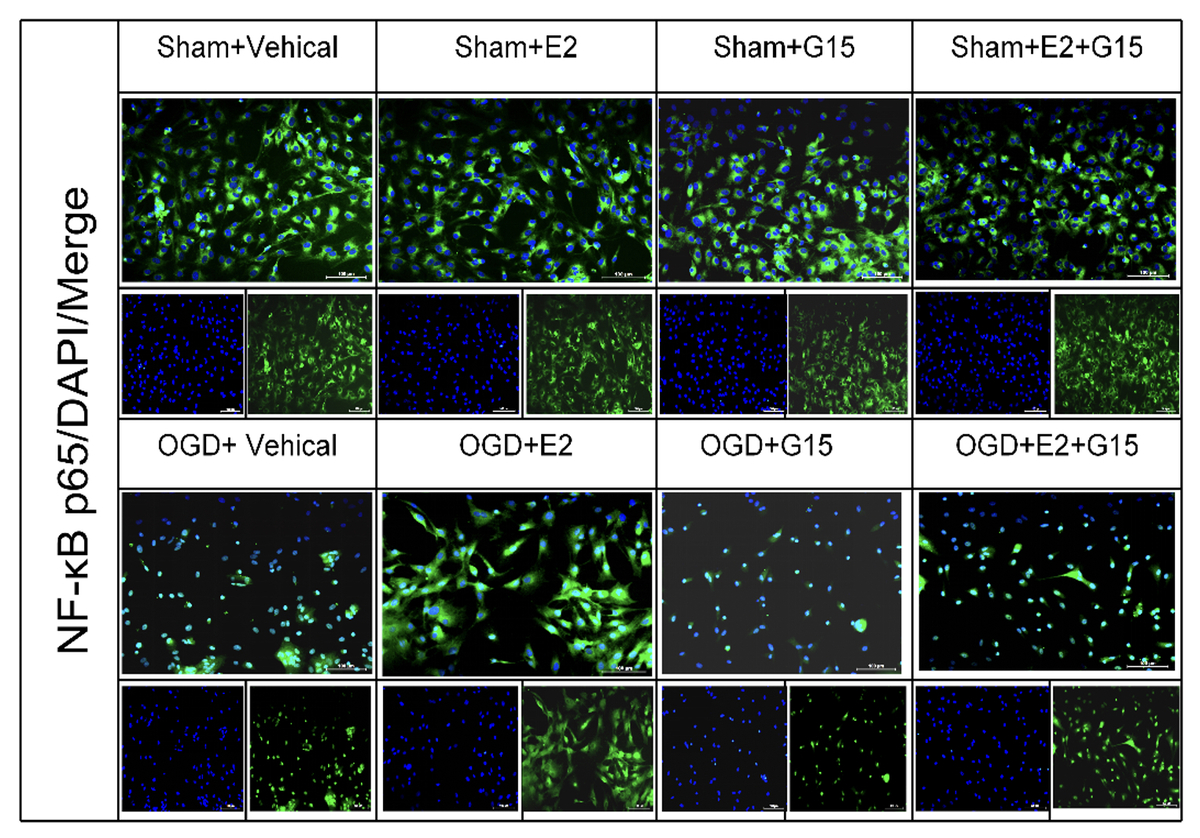Current issue
Archive
Manuscripts accepted
About the Journal
Editorial office
Editorial board
Abstracting and indexing
Subscription
Contact
Ethical standards and procedures
Most read articles
Instructions for authors
Article Processing Charge (APC)
Regulations of paying article processing charge (APC)
NEUROLOGY / RESEARCH PAPER
β -estradiol alleviates Hypoxic-ischemic brain damage in neonatal rats through the GPER1 regulating AKT/NF-κB signal pathway
1
The First Affiliated Hospital of Harbin Medical University, China
2
Linyi Maternal and Child Health Hospital, China
Submission date: 2024-06-19
Final revision date: 2024-07-27
Acceptance date: 2024-08-05
Online publication date: 2024-08-06
Corresponding author
KEYWORDS
TOPICS
ABSTRACT
Introduction:
Research has established that estradiol (E2) offers neuroprotection against hypoxic-ischemic brain damage (HIBD) in neonatal rats, yet the underlying mechanisms are not fully understood. This study seeks to delineate whether E2's neuroprotective effects in neonatal HIBD are mediated through astrocytes by modulating the G Protein-Coupled Estrogen Receptor 1 (GPER1) receptor and the subsequent AKT Serine (AKT)/NF-κB signaling cascade.
Material and methods:
We developed an in vivo HIBD model in neonatal rats and established primary cultures of astrocytes subjected to oxygen-glucose deprivation-reoxygenation (OGD-R) as an in vitro model. E2 and the GPER1 inhibitor (G15) were administered according to the experimental design. Protein expression levels of GPER1, phosphorylated AKT (p-AKT), NF-κB p65, and cleaved-caspase3 were examined using Western blot analysis. Apoptosis was assessed via the TUNEL assay, and the presence of TNF-α and IL-1β in the cell supernatant was quantified by ELISA. The localization of p-AKT and NF-κB p65 was determined through immunofluorescence.
Results:
Our findings indicate that E2 treatment significantly reduced the volume of brain infarction and astrocyte apoptosis. E2 upregulated GPER1 and p-AKT expression while downregulating NF-κB p65 and cleaved-caspase3 levels in astrocytes and neonatal rats post-HIBD. Additionally, E2 diminished the secretion of TNF-α and IL-1β in the cell supernatant. The G15 inhibitor notably reversed the neuroprotective effects of E2 and the associated molecular changes.
Conclusions:
These results suggest that E2 may exert neuroprotection in neonatal rats with HIBD by inhibiting astrocyte apoptosis and modulating the expression of GPER1, p-AKT, and NF-κB, thereby providing a potential therapeutic strategy for HIBD.
Research has established that estradiol (E2) offers neuroprotection against hypoxic-ischemic brain damage (HIBD) in neonatal rats, yet the underlying mechanisms are not fully understood. This study seeks to delineate whether E2's neuroprotective effects in neonatal HIBD are mediated through astrocytes by modulating the G Protein-Coupled Estrogen Receptor 1 (GPER1) receptor and the subsequent AKT Serine (AKT)/NF-κB signaling cascade.
Material and methods:
We developed an in vivo HIBD model in neonatal rats and established primary cultures of astrocytes subjected to oxygen-glucose deprivation-reoxygenation (OGD-R) as an in vitro model. E2 and the GPER1 inhibitor (G15) were administered according to the experimental design. Protein expression levels of GPER1, phosphorylated AKT (p-AKT), NF-κB p65, and cleaved-caspase3 were examined using Western blot analysis. Apoptosis was assessed via the TUNEL assay, and the presence of TNF-α and IL-1β in the cell supernatant was quantified by ELISA. The localization of p-AKT and NF-κB p65 was determined through immunofluorescence.
Results:
Our findings indicate that E2 treatment significantly reduced the volume of brain infarction and astrocyte apoptosis. E2 upregulated GPER1 and p-AKT expression while downregulating NF-κB p65 and cleaved-caspase3 levels in astrocytes and neonatal rats post-HIBD. Additionally, E2 diminished the secretion of TNF-α and IL-1β in the cell supernatant. The G15 inhibitor notably reversed the neuroprotective effects of E2 and the associated molecular changes.
Conclusions:
These results suggest that E2 may exert neuroprotection in neonatal rats with HIBD by inhibiting astrocyte apoptosis and modulating the expression of GPER1, p-AKT, and NF-κB, thereby providing a potential therapeutic strategy for HIBD.
Share
RELATED ARTICLE
We process personal data collected when visiting the website. The function of obtaining information about users and their behavior is carried out by voluntarily entered information in forms and saving cookies in end devices. Data, including cookies, are used to provide services, improve the user experience and to analyze the traffic in accordance with the Privacy policy. Data are also collected and processed by Google Analytics tool (more).
You can change cookies settings in your browser. Restricted use of cookies in the browser configuration may affect some functionalities of the website.
You can change cookies settings in your browser. Restricted use of cookies in the browser configuration may affect some functionalities of the website.



